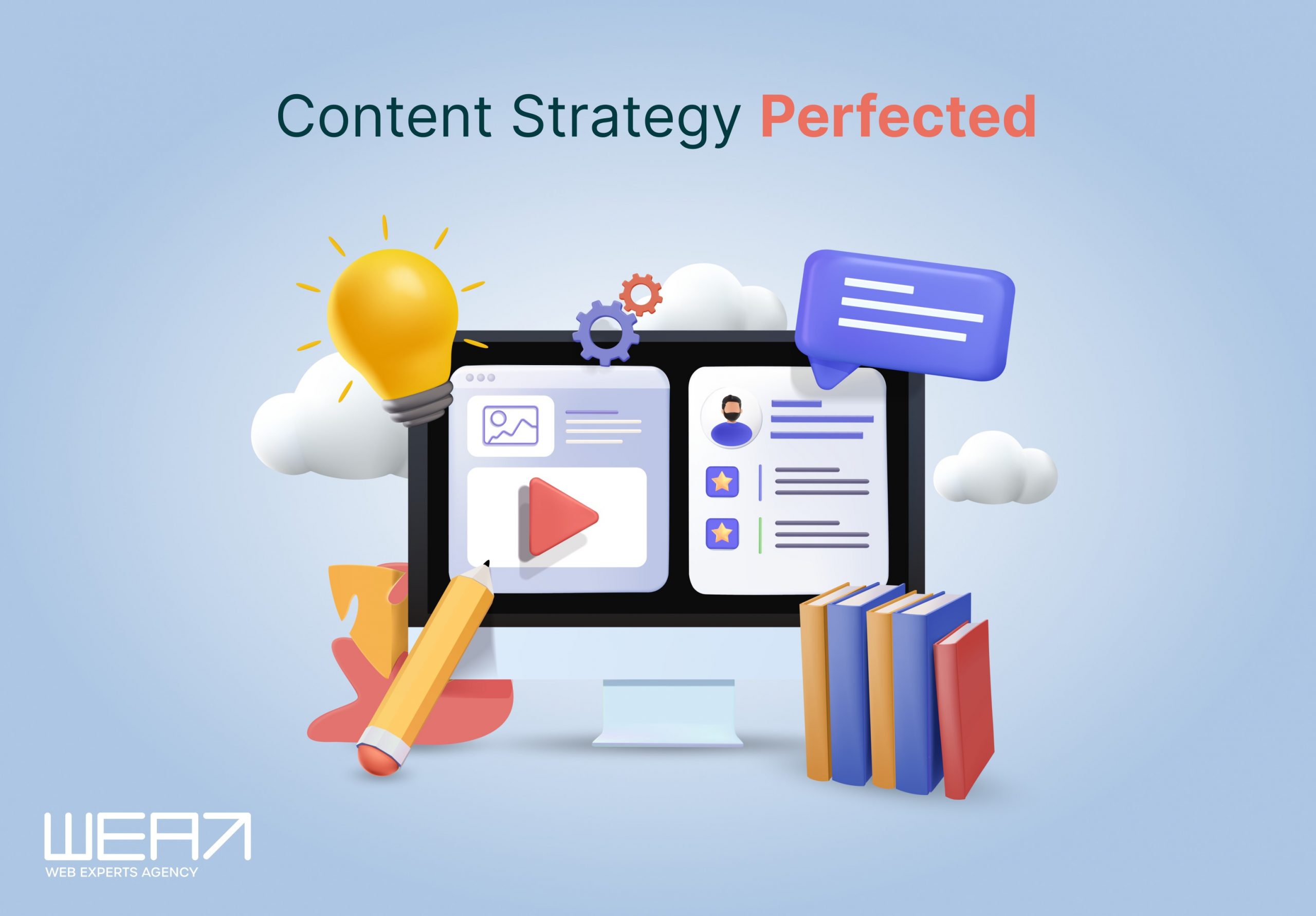
Content marketing is a focused approach to valuable content creation and logical distribution for visibility and engagement with the target audience. It aims to build trust, establish brand authority, and drive profitable customer actions, such as lead generation, sales, and customer loyalty.
Key aspects of content marketing include:
-
Valuable Content:
Content marketing involves creating real value for the target audience. This can include educational articles, informative videos, how-to guides, infographics, podcasts, and more.
-
Consistency:
Consistency in content creation and distribution is vital. Regularly publishing high-quality content helps build and maintain an engaged audience.
-
Relevance:
Content should be relevant to the audience’s interests, needs, and pain points. It should address their questions and problems.
-
Audience-Centric:
Content marketing involves understanding the audience’s demographics, preferences, and behaviors. This knowledge is used to create content that resonates with the intended audience.
-
Multi-Platform Distribution:
Content is consumed across various channels, such as websites, blogs, social media, email marketing, and third-party platforms. The choice of platforms depends on where the target audience is most active. So, a seamless omnichannel experience is essential for effective content marketing.
-
Storytelling:
Effective content marketing often involves impressive storytelling. Sharing stories can help connect with the audience on a personal and emotional level, making the content more relatable.
-
SEO and Search Visibility:
Content is optimized for search engines (SEO) to ensure it ranks well on the search engine results page (SERP), making it discoverable to potential customers searching for related topics.
-
Engagement and Interaction:
Content marketing encourages the audience to interact by commenting, sharing, and subscribing, fostering a sense of community participation.
-
Measurable Results:
Marketers use key performance indicators (KPIs) to measure content marketing effectiveness. Common KPIs include website traffic, social engagement, conversion rates, and customer retention.
-
Long-Term Strategy:
Content marketing is not a one-time campaign; it’s an ongoing, long-term strategy. Building an audience and reaping the benefits often takes time, patience, and numerous iterations to figure out what works.

Formulating a marketing blueprint to sell your content
Creating a marketing blueprint to sell your content involves strategically reaching your target audience and converting them into customers or subscribers. Devising a content marketing strategy involves several key stages to ensure a well-structured and effective plan. Here’s a step-by-step guide to formulating a marketing blueprint for your content:
-
Set Clear Objectives:
Start by defining your content marketing goals and objectives. What do you want to achieve? Typical objectives include increasing brand awareness, driving website traffic, generating leads, nurturing leads, and increasing sales.
-
Audience Research and Persona Development:
Understand your target audience thoroughly. Research their demographics, pain points, interests, and online behavior.
-
Competitive Analysis:
Analyze your competitors’ content marketing strategies. Identify what types of content they are producing, where they are getting engagement, and what differentiates your offering.
-
Content Audit (if applicable):
If you already have existing content, perform a content audit. Assess the quality, performance, and relevance of your current content assets. Determine which pieces can be updated, repurposed, or retired.
-
Content Repurposing:
Repurpose successful content into different formats (e.g., turning a blog post into a video or infographic) to reach a broader audience and extend the life of your content.
-
-
Keyword Research:
Identify relevant search terms and phrases your audience uses. This research will help shape your content topics and SEO strategy.
-
Content Ideation:
Aligning content with your audience’s needs and preferences requires extensive brainstorming. These ideas should also support your business objectives. Create a list of potential content topics and formats.
-
Content Planning:
Develop an editorial calendar that outlines what content you’ll create and when it will be published. Content formats considering seasonality and trends are believed to be balanced.
-
Resource Allocation:
Determine the resources needed to execute your content strategy. This includes budget, personnel, tools, and technology.
-
Content Creation:
Start producing high-quality content based on your content plan. Ensure your content has a high readability score with adequate flow, is informative engaging, and adds value to your audience.
-
Content Distribution:
Develop a strategy for promoting and distributing your content. Consider social media marketing, email marketing, content syndication, influencer outreach, and paid advertising to increase your content’s reach beyond organic traffic.
-
Effective Copywriting:
When writing marketing copies within your long-form content or for social media posts, ensure that you don’t hard sell. Adding a subtle nudge makes the audience more likely to gravitate towards the offering.
-
-
Monitoring and Analytics Setup:
Setting up monitoring and analytics is a crucial component of any content marketing strategy. It allows you to track the performance of your content, measure its impact, and make data-driven decisions to improve your strategy over time.
-
Choose Analytics Tools:
Select the analytics tools that best suit your needs. Popular options include Google Analytics, Adobe Analytics, and social media analytics platforms like Facebook Insights and Twitter Analytics. Consider using marketing automation platforms for more advanced tracking and reporting.
-
Install Tracking Codes:
Implement tracking codes provided by your chosen analytics tools on your website and landing pages. These codes will collect data about user behavior, such as page views, click-through rates, and conversions.
-
Set Up Goal Tracking:
Define specific goals and objectives for your content marketing strategy. These could include lead generation, e-commerce sales, newsletter sign-ups, or other conversions. Set up goal tracking in your analytics tool to measure the success of your content in achieving these objectives.
-
Event Tracking:
Use event tracking to monitor specific interactions on your website, such as video views, downloads, form submissions, and social media shares. This helps you understand how users engage with your content.
-
-
Content Tagging and Categorization:
Tag and categorize your content in your analytics tool. This allows you to segment data and analyze the performance of different content types, topics, or campaigns.
-
UTM Parameters:
Implement UTM (Urchin Tracking Module) parameters for campaigns and promotional links in your URLs. This allows you to track the source, medium, and campaign associated with traffic to your content.
-
Custom Dashboards and Reports:
Creating custom dashboards and reports in your analytics tool helps track key performance indicators (KPIs) relevant to your content marketing strategy. These reports should provide a snapshot of your content’s impact and help you identify trends.
-
-
Conversion Funnels:
Set up conversion funnels to track the user journey from initial interaction with your content to conversion. This helps identify drop-off points and areas for improvement in the conversion process.
-
Legal and Compliance Considerations:
Ensure your content complies with copyright laws, privacy regulations, and other legal requirements.
-
Documentation and Reporting:
Document your content marketing strategy, processes, and results. Since a content marketing strategy is not static, regularly report progress to stakeholders and make strategic adjustments as needed; it should evolve as your business and audience evolve.

Content marketing best practices for better engagement
Effective content marketing practices can take various forms and strategies. Here are some examples of good content marketing practices that have proven successful for many businesses:
-
Blogging and Thought Leadership:
Regularly publishing informative and insightful blog posts on topics relevant to your industry can position your brand as a thought leader. Share your expertise and address common pain points to attract and engage your target audience.
-
Email Marketing Campaigns:
Create personalized email campaigns that deliver valuable content, such as newsletters, product updates, educational resources, and exclusive offers. Segment your email list to tailor content to different audience segments.
-
Social Media Engagement:
Building a community around your brand involves awareness and engagement. Respond to comments, questions, and feedback promptly to foster relationships.
-
Video Content:
Video content, including tutorials, product demonstrations, behind-the-scenes footage, and customer testimonials, can be highly engaging. Platforms like YouTube, TikTok, and Instagram Reels are great for video marketing.
-
Interactive Content:
Encourage audience participation with interactive content, such as quizzes, polls, surveys, and calculators, providing valuable data and insights.
-
Content Syndication:
Syndicate your content on relevant platforms, such as industry publications, to expand your reach and establish authority in your niche.
-
Content Partnerships and Collaborations:
Collaborate with influencers, experts, or complementary brands to co-create content or leverage their audiences for mutual benefit. -
Podcasting:
Hosting a podcast can help you connect with a growing audience of audio content consumers. Share industry insights, interview experts, and provide valuable information.
-
User-Generated Content (UGC):
Encourage customers to create content related to your products or services. Sharing this on your platforms builds trust and authenticity.
-
Case Studies and Success Stories:
Showcase how your products or services have benefited customers. Highlight the challenges faced, the solutions provided, and the outcomes achieved.
-
Whitepapers and eBooks:
Create in-depth, authoritative resources that address complex topics within your industry. Offer them as downloadable assets in exchange for contact information, helping with lead generation.
-
Webinars and Live Streaming:
Host live webinars, workshops, or Q&A sessions to engage with your audience in real time. These can be recorded and repurposed as on-demand content.
-
Content Personalization:
Use data-driven personalization to deliver tailored content recommendations, product suggestions, and user experiences based on individual user behavior and preferences.
Content marketing is considered a cost-effective and sustainable way to build brand loyalty, establish authority in your industry, and attract and retain customers over time. It’s particularly effective in industries where trust and expertise are crucial in decision-making. The primary goal is to provide information and value that guides the audience through their customer journey.
FAQs
-
Is there a standard approach for successful content marketing?
While there isn’t a one-size-fits-all standard approach for successful content marketing, common principles and best practices can guide your strategy.
-
How soon can you expect results from a comprehensive content marketing strategy?
The timeline for seeing results from a content marketing strategy can vary widely depending on several factors, including your industry, competition, content quality, and specific goals.
-
How effective are content marketing automation tools?
Content marketing automation tools can be highly effective when used correctly and with a well-thought-out content marketing strategy.
-
How many iterations are ideal for perfecting a content marketing strategy?
There isn’t a fixed number of iterations that universally applies to all businesses. Maintaining a proactive, data-driven approach and remaining open to feedback is key.
-
How do you identify a content format ideal for your business?
Experiment with different content formats, especially if you’re unsure which one is ideal. Conduct A/B tests or pilot projects to gauge audience response.




